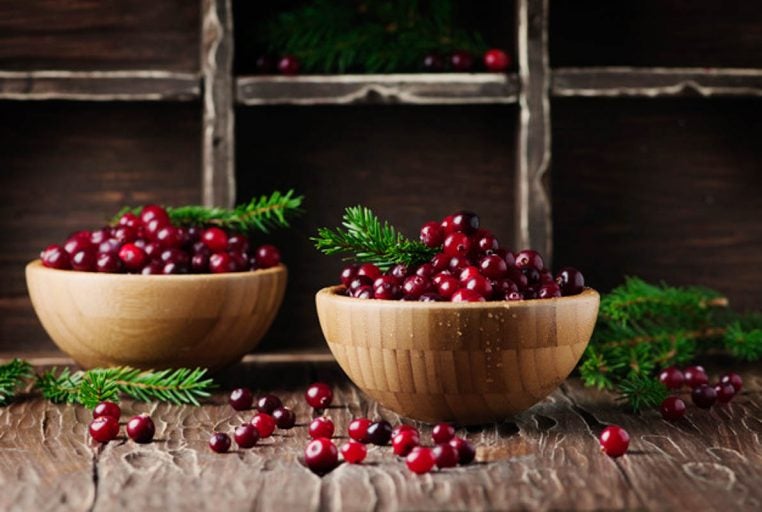About this time of year the past several years, my husband can’t help but comment on the total departure from the “traditional” Thanksgiving feast available at our family’s gathering.
He says something along the lines of: “I’m pretty sure the Pilgrims at Plymouth did not have pernil on their table during their Thanksgiving celebration.” (For the uninitiated, pernil is a traditional pork roast dish in many Caribbean countries.)
This UCF Forum was written long before COVID-19. The author says her family will observe the holidays more privately this year and will heed all CDC guidelines. “There are a lot of treasured folks in our midst – and we are not taking chances.”
What? Pernil, rice and beans, rice and peas, yellow plantain casserole, Bustelo in abundant quantities, Dominican cake, tres leches and flan are not staples of everyone’s Thanksgiving dinner? Who knew? I certainly didn’t.
But I do know that just as the settlers who started this tradition, we Americans of Hispanic descent are as invested as everyone else in the celebration of Thanksgiving.
There are so many things to be grateful for: freedom of expression, friendships, free enterprise, educational opportunities and societal mobility, among countless more. In short, all the characteristics that make our country great.
Thanksgiving is a time when we, as a nation, put our problems on hold and reflect on our many blessings and good fortune.
How exactly do we do this? Well, apparently not in a one-size-fits-all fashion.
I was born in New York and have always lived in the United States except for four years I lived in the Dominican Republic as a child. And for as long as I can remember, my extended family’s Thanksgiving celebrations have been hosted by whoever happened to have the biggest house capable of accommodating our huge family: my maternal grandparents, my 12 aunts and uncles and their spouses, my 30-plus cousins, (and their significant others), and children, in addition to extended family in the area and out-of-town guests. It’s a dressy occasion, and while attendance is not “mandatory,” it’s understood by all that it is mandatory.
Over the past decade, however, given that our family is now split between New York City and Florida, attendance has declined a bit. We now average between 60 and 70 people because not everyone can make it here. (But we keep in constant touch in other ways. Gracias, Facebook!)
Dinner is usually held around 8 p.m. The gathering is filled with laughter, storytelling, the constant inventory of who and what dish has arrived and which ones are missing – and, of course, good music.
As you can imagine, the food is divided among different families. After all, home cooking for this small army is no small task. Luckily, my mom and aunts take charge of dividing the cooking responsibilities and they each have their specialty. My mom is the pastelon-queen (yellow plantain casserole); Tia Irene is the chicken-and-turkey-stew goddess; Tia Luisa and Tia Tago are Martha Stewart’s Dominican counterparts; Tia Caridad is a rice connoisseur; Tia Mary is a dessert expert, etc.
As for me and my generational counterparts, we are usually assigned the plasticware, beverages, green salad, etc. (You know, the really hard stuff). From time to time, however, we are also assigned some kind of “traditional” dish (such as the pernil), which using the language of today’s global economy, we often enthusiastically outsource to a bodega.
In light of my husband’s dismay at the inaccuracy (unauthenticity?) of our Thanksgiving dinner selections, and in the interest of exposing our daughters to mainstream culture, last year during Thanksgiving week I decided to enlist our daughters’ help in researching what the Pilgrims enjoyed at their Thanksgiving feast. I challenged our girls to research ingredients and preparation instructions and told them our immediate family of four would observe a mini-Thanksgiving dinner on the Wednesday before Thanksgiving. So yes, I was going to debut in the turkey department!
And finally, at least for me, I was going to be able solve the “mystery” of the cranberry sauce I had heard about but didn’t know what it was for, what it tasted like, was it a dipping sauce for the vegetables, or was it meant to be eaten on its own?
My girls and I gathered plenty of information, drafted our grocery list, and enlisted the help of a Publix employee to help us find some of the ingredients. I’m happy to report that we made stuffing, cranberry sauce and gravy from scratch, in addition to some other stuff, and it was all edible!
And while I now know what the cranberry sauce is for, it will not become a staple of our meals anytime soon.
The exercise was enlightening, fun, and created great memories for our family.
It also provided an opportunity for our family – like everyone in the nation – to take part in this early American tradition that we have made our own.
Maritza Martinez ’00 ’05MA ’11MBA is director of the University of Central Florida’s Community Relations department. She can be reached at Maritza.Martinez@ucf.edu.
This is a reposting from the UCF Forum, a series of opinion columns from faculty, staff and students who serve on a panel for a year. A new column is posted each Wednesday on UCF Today and then broadcast on WUCF-FM (89.9) between 7:50 and 8 a.m. Sunday. Opinions expressed are those of the columnists, and are not necessarily shared by the University of Central Florida.
